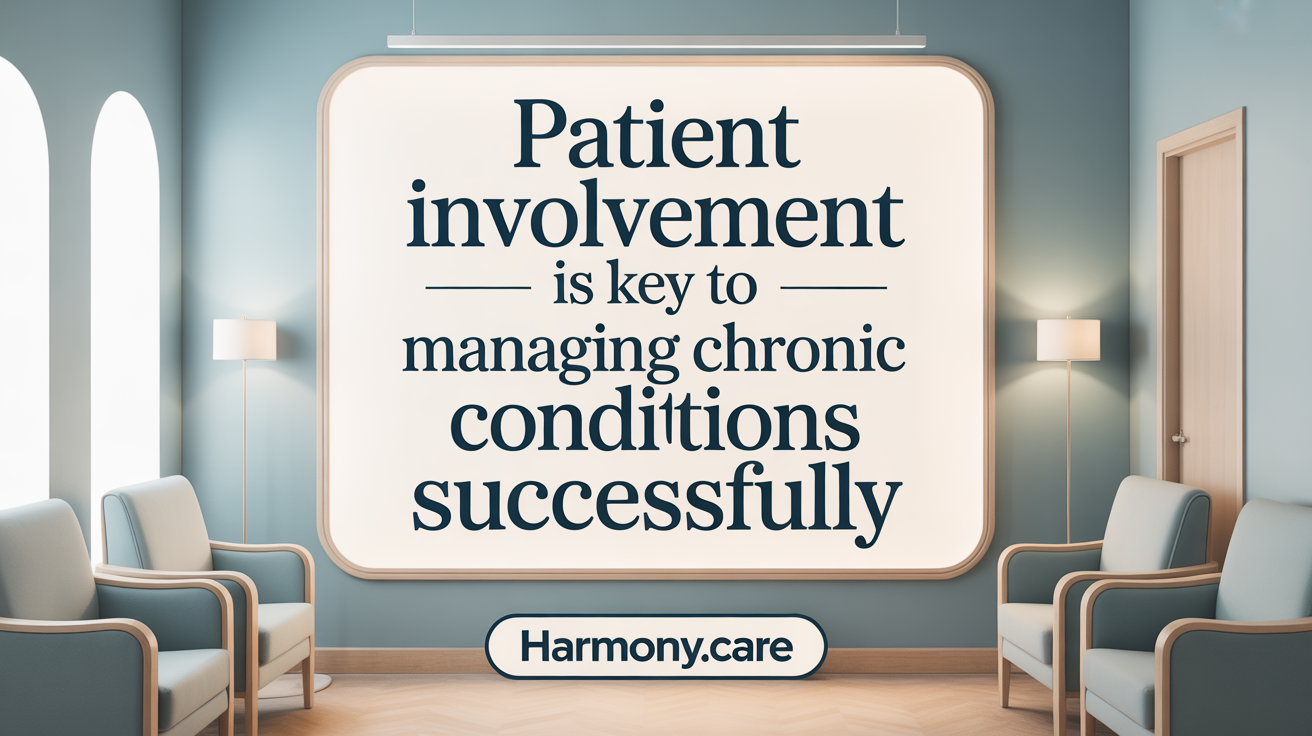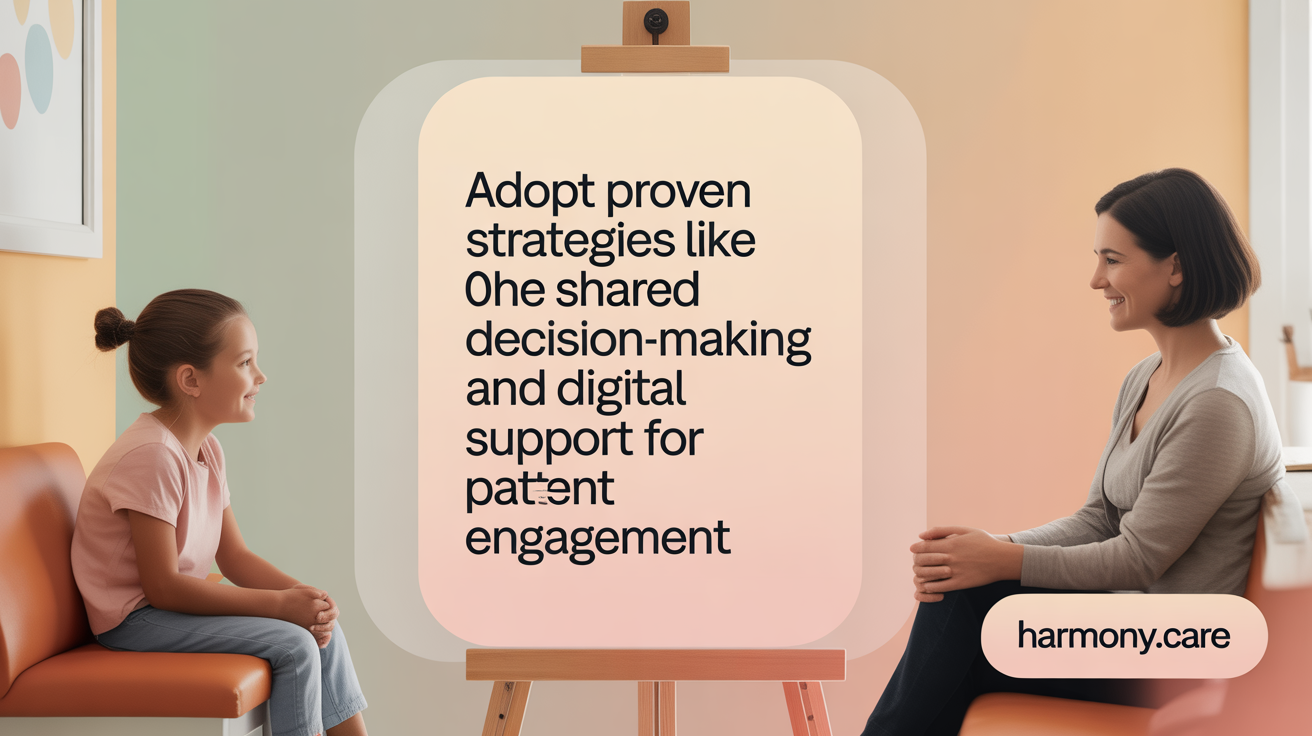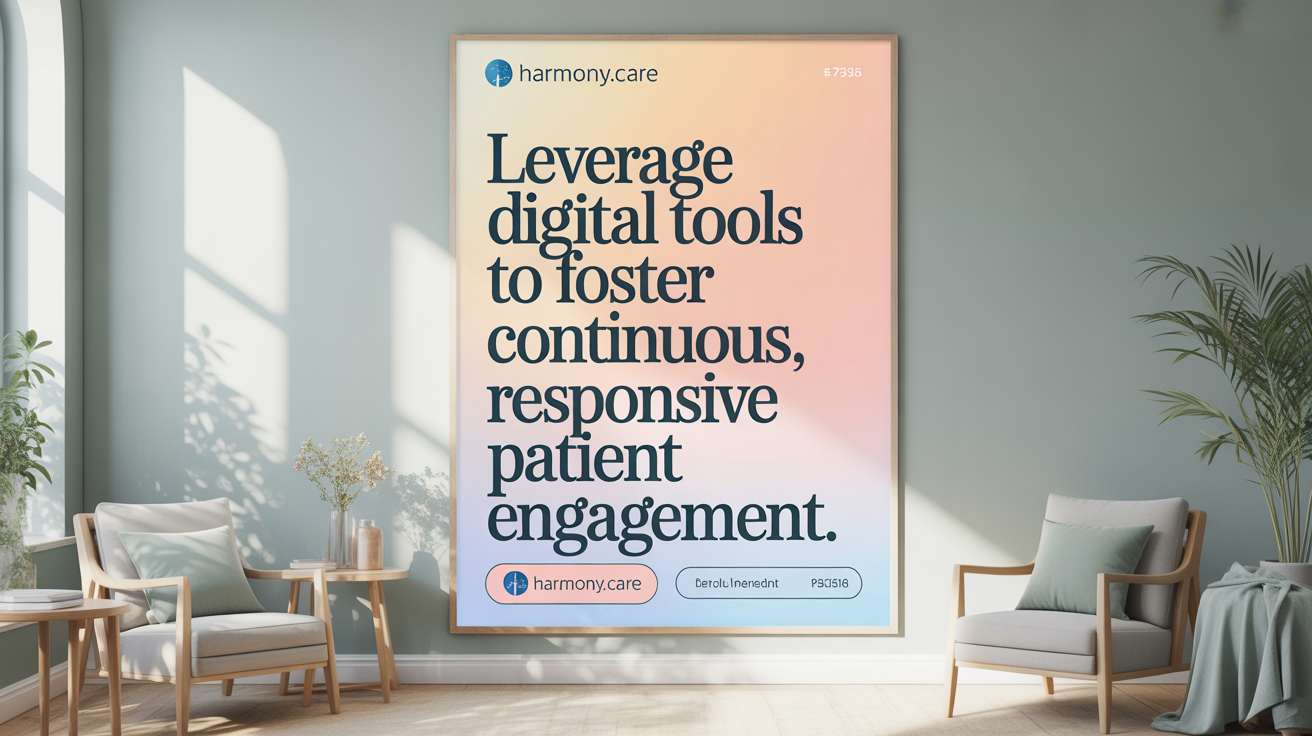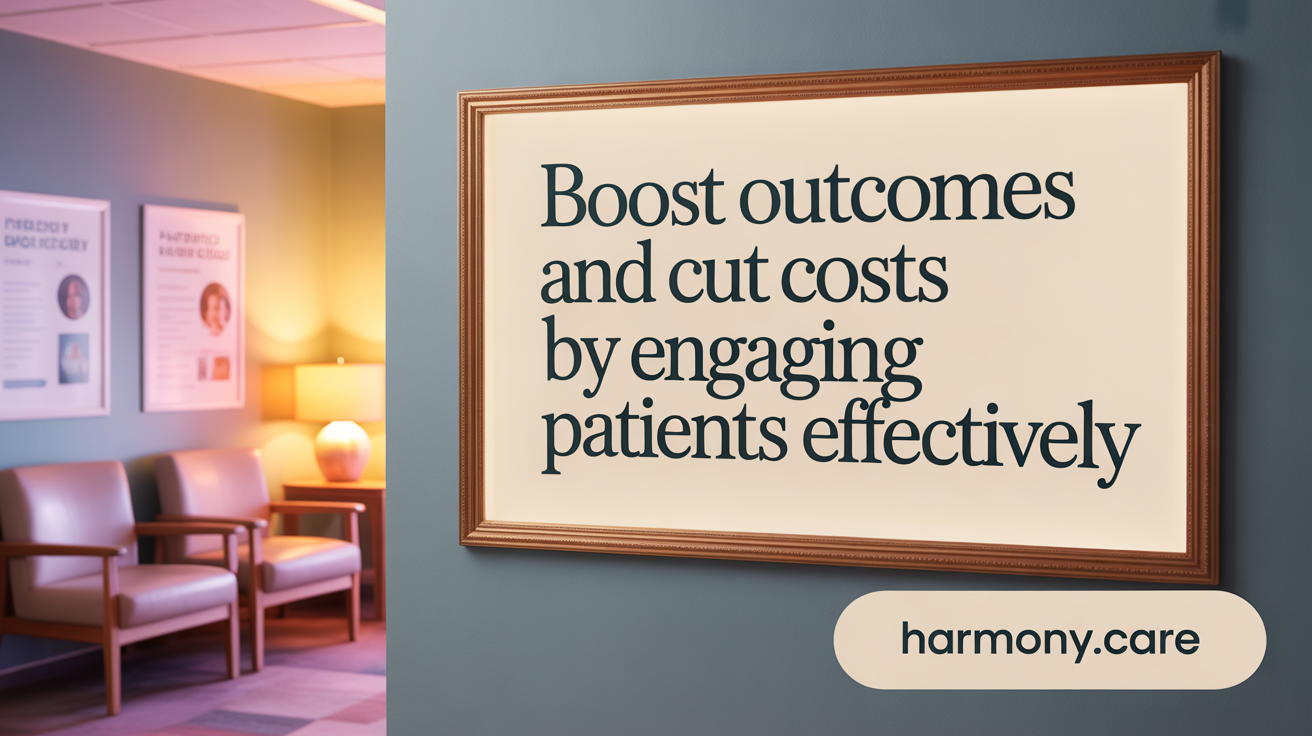Understanding the Critical Role of Patient Engagement
Chronic diseases affect millions and demand more than traditional healthcare interventions; they require active patient participation. Encouraging patient engagement in chronic care management transforms healthcare from a provider-driven model to a collaborative partnership. This shift enhances outcomes, reduces costs, and improves quality of life. This article explores essential strategies, frameworks, barriers, and the role of technology in fostering patient involvement for better management of chronic conditions.
Why Patient Engagement is Crucial in Chronic Disease Management

Why is patient engagement important in chronic disease management?
Patient engagement plays a central role in effectively managing chronic illnesses such as heart disease, diabetes, and hypertension. When patients are actively involved in their care, they are more motivated to follow treatment plans, adhere to medications, and adopt healthier lifestyles. Engaged patients tend to monitor their symptoms closely, communicate openly with healthcare providers, and implement self-management strategies. This proactive participation helps identify early signs of complications, leading to timely interventions that can prevent hospitalizations.
Furthermore, patient involvement enhances understanding of disease processes and management options, which fosters better decision-making. As a result, health outcomes improve, and patients often experience improved quality of life.
From a systemic perspective, increased engagement reduces healthcare costs by decreasing emergency visits, hospital stays, and the need for intensive treatments. Utilizing digital tools, tailored education, and supportive communication strategies, healthcare providers can bolster ongoing participation. Overall, engaging patients in their care not only empowers them but also creates a partnership that promotes better health, satisfaction, and longevity.
Common Barriers to Patient Engagement and Strategies to Overcome Them
What are the main communication challenges and health literacy issues affecting patient engagement?
Effective communication is essential for patient engagement, yet many patients face challenges due to limited health literacy and language barriers. When information isn’t clear or accessible, patients may struggle to understand their conditions or follow treatment plans, leading to non-adherence and poorer health outcomes. Simplifying medical language, using multimedia educational tools, and providing tailored resources can help bridge these gaps. Digital tools like patient portals and telehealth platforms also enhance communication, giving patients easier access to information and support.
How do emotional and relational barriers such as guilt, shame, and distrust impact patient involvement?
Emotional factors significantly influence a patient’s motivation to participate actively in their care. Feelings of guilt, shame, or hopelessness can hinder engagement, especially if patients perceive judgment or lack of empathy from healthcare providers. Distrust in providers or dissatisfaction with care interactions further dampen willingness to communicate openly. Training clinicians in rapport-building, empathy, and shared decision-making—like the CREATE Wellness intervention—can foster trust and improve emotional support, encouraging patients to engage more fully.
What systemic issues hinder ongoing patient engagement?
Inflexible care systems and lack of personalized, non-judgmental support act as systemic barriers. Rigid appointment schedules, fragmented care delivery, and healthcare models that don’t adapt to individual needs can frustrate patients. Implementing flexible scheduling, integrating team-based and personalized care plans, and utilizing technology for continuous engagement can address these systemic issues. Efforts to create patient-centered systems promote sustained involvement and better health outcomes.
How do social determinants of health influence patient engagement?
Social factors such as socioeconomic status, education level, cultural background, and access to resources heavily impact engagement. Patients with limited resources or facing social challenges may feel overwhelmed or disconnected from their care. Addressing social determinants through community partnerships, support services, and culturally sensitive education ensures that all patients receive equitable support, fostering greater engagement and adherence.
Strategies to improve patient engagement
To overcome these barriers, strategies include personalized education, leveraging digital communication tools, building trusting relationships, and tailoring care approaches to individual social and emotional needs. Consistent follow-up, community involvement, and addressing social determinants of health are vital. These comprehensive efforts help create an environment where patients feel empowered, understood, and motivated to participate actively in their chronic illness management.
Frameworks and Stages of Patient Engagement
What are the five stages of the patient engagement framework?
The five stages of the patient engagement framework are inform, consult, involve, collaborate, and empower. This model fosters a gradual increase in patient participation, starting with basic education and progressing to active partnership and self-management.
In the inform stage, healthcare providers deliver essential knowledge about health conditions and treatments, laying the foundation for understanding.
The consult phase involves two-way communication where patients can voice concerns and preferences, influencing care decisions.
During involve, patients participate more actively, working alongside care teams to develop treatment plans.
The collaborate stage emphasizes shared decision-making, with patients and providers jointly choosing the best courses of action.
Finally, empowerment enables patients to independently manage their health, utilizing skills, resources, and confidence gained through previous stages.
Successfully implementing these stages hinges on organizational adjustments, comprehensive staff training, and leveraging technology such as patient portals and telehealth systems. These elements help create a healthcare environment centered around patient participation, ultimately improving outcomes in chronic disease management.
Effective Strategies for Encouraging Patient Engagement

What strategies can healthcare providers use to encourage patient engagement?
Encouraging patient engagement is essential for effective chronic disease management. Healthcare providers can adopt several strategies that foster active participation and improve health outcomes.
One fundamental approach is shared decision-making. This process involves involving patients in their treatment choices, ensuring they understand their health conditions and feel empowered to make informed decisions. When patients participate in their care plans, they are more likely to adhere to treatments and feel committed to lifestyle changes.
Leveraging digital health technologies also significantly enhances engagement. Using patient engagement software, mobile health apps, and chatbots allows providers to communicate proactively, share personalized health information, and remind patients of upcoming appointments or medication schedules. These tools help bridge gaps in communication and make support accessible anytime.
In addition, behavioral strategies like nudging can subtly influence patients towards healthier behaviors without limiting their freedom of choice. For example, default options in digital platforms or reminder prompts can encourage medication adherence or healthy lifestyle choices, leading to improved preventive care.
Patient Support Programs that combine education with behavioral approaches further motivate individuals. These programs offer tailored educational materials alongside behavioral nudges, creating a supportive environment that promotes ongoing engagement.
Lastly, continuous training for healthcare providers and the integration of artificial intelligence (AI) and digital tools in care processes optimize resource use. AI-driven insights can identify at-risk patients earlier, tailor interventions more effectively, and streamline workflows.
Implementing these strategies collectively promotes sustained patient involvement, which translates into better management of chronic conditions, increased satisfaction, and improved overall health outcomes.
| Strategy | Description | Benefits |
|---|---|---|
| Shared decision-making | Involving patients in treatment choices | Increased adherence and empowerment |
| Digital tools and apps | Providing personalized communication and reminders | Better communication, adherence |
| Behavioral nudging | Using subtle prompts to influence health behaviors | Improved preventive actions |
| Support programs | Combining education, behavioral strategies, and personalized support | Enhanced motivation and compliance |
| Provider training and AI | Continuous education and digital integration for streamlined care | Optimized workflows, early intervention |
Through these integrated approaches, healthcare providers can effectively motivate patients and foster enduring engagement essential for managing chronic diseases successfully.
Role of Technology in Enhancing Patient Engagement

Digital communication tools: telehealth, patient portals, secure messaging
Technology plays a crucial role in empowering patients and improving engagement. Digital tools such as telehealth platforms, patient portals, and secure messaging enable continuous communication between patients and providers. These tools allow patients to access their health information, schedule appointments, ask questions, and receive timely advice from their healthcare team without needing to visit the clinic.
Remote physiological monitoring and patient-reported outcomes
Remote monitoring devices enable real-time tracking of vital signs and symptoms, providing valuable data that can alert providers to potential issues early. Patient-reported outcome measures collected through digital tools help tailor care plans, track progress, and motivate patients to stay engaged in managing their health.
Use of automation for reminders, surveys, and follow-ups
Automated systems such as appointment reminders, medication alerts, and post-visit surveys are proven to enhance adherence and satisfaction. These tools help maintain ongoing engagement, identify care gaps, and facilitate timely interventions. Automated follow-ups ensure patients remain motivated and supported between visits.
Integration of CCM software platforms to track and motivate patients
Care management platforms like ThoroughCare integrate these digital functions into one system. They help healthcare providers monitor patient status, send motivational messages, and adjust care plans based on real-time data. This continuous, tech-supported interaction fosters stronger patient-provider relationships and improves health outcomes.
Technology-driven engagement strategies convert traditional healthcare into a more accessible, responsive, and patient-centered approach. They support the ongoing management of chronic diseases, reduce hospitalizations, and enhance the overall quality of life for patients.
Implementing Effective Communication and Educational Strategies

Simplifying information and tailoring education
Effective patient engagement begins with simplifying complex medical information. This involves using clear language and visual aids to help patients understand their conditions and treatment options. Personalized education materials that consider individual health literacy levels increase the likelihood of sustained engagement. Tailoring educational content ensures that patients receive relevant information, which can empower them to manage their health proactively.
Using multimedia, support groups, and workshops
Incorporating diverse educational tools like videos, interactive modules, and digital resources caters to different learning preferences. Support groups and workshops provide social and emotional support, allowing patients to share experiences and gain encouragement. These initiatives foster a sense of community, reducing feelings of isolation and promoting continuous self-management.
Addressing cultural and literacy barriers
Cultural sensitivity and health literacy are critical components of successful communication strategies. Healthcare providers should use culturally appropriate language and consider patients' backgrounds to build trust. Providing educational materials in multiple languages and at appropriate reading levels helps bridge gaps. Addressing these barriers enhances understanding and reduces disparities in care.
Enhancing provider-patient communication with open dialogue and trust building
Open, honest dialogue is the foundation of strong provider-patient relationships. Building trust involves active listening, empathic engagement, and encouraging questions. When patients feel respected and heard, they are more likely to follow care plans and participate actively in their health management. These communication strategies are essential for fostering ongoing engagement and improving health outcomes.
Increasing Patient Enrollment and Sustaining Active Participation in Chronic Care Management
To effectively increase patient enrollment and maintain ongoing engagement in Chronic Care Management (CCM), healthcare providers must adopt targeted strategies that prioritize patient understanding, trust, and continuous support.
One crucial step involves identifying eligible patients—those with two or more chronic conditions—and obtaining their informed consent. Clear communication about the benefits of CCM and addressing patient concerns about costs, time commitments, or unfamiliarity with the program is vital. Personalized in-office discussions play a significant role in explaining how CCM can help manage their conditions, improve quality of life, and prevent hospitalizations.
Outreach efforts should extend beyond visits. Proactive communication, such as automated reminders, educational messages, and follow-up calls, fosters ongoing involvement. Partnership with community organizations can also enhance awareness, especially in underserved populations, helping overcome barriers like transportation or social determinants of health.
Implementing continuous follow-up programs ensures patients remain engaged. Regular check-ins—via phone, digital messaging, or telehealth—monitor progress, address new concerns, and reinforce adherence to treatment plans. Digital tools like patient portals and remote monitoring devices provide real-time data, empowering patients and strengthening their connection with care teams.
Research indicates that these approaches lead to improved health outcomes, reduced hospital readmissions, and greater patient satisfaction. Consistent engagement, personalized communication, and community partnerships form the backbone of successful patient enrollment and sustained participation in CCM programs, ultimately fostering a proactive, patient-centered healthcare environment.
| Strategy Type | Description | Expected Outcomes |
|---|---|---|
| Identification & Consent | Pinpoint eligible patients, explain CCM benefits, seek informed authorization | Increased enrollment, informed patients |
| Clear Communication & Outreach | Use tailored messaging, community outreach, and digital reminders | Higher awareness and participation |
| Continuous Follow-up | Regular check-ins, remote monitoring, and digital engagement | Better adherence, early issue detection |
| Community Partnerships | Collaborate with local organizations to broaden reach | Improved access and support |
| Measurement & Refinement | Track engagement metrics, adapt strategies accordingly | Enhanced program effectiveness |
Overall Impact of Patient Engagement on Healthcare Outcomes and System Efficiency

How does patient engagement correlate with adherence and reduction in complications?
Engaged patients are more likely to follow their prescribed treatment plans, leading to better management of their conditions. This adherence reduces the risk of complications, hospital readmissions, and emergency visits. Studies show that actively involved patients experience fewer adverse events, and those who communicate effectively with their healthcare providers tend to have improved health outcomes.
In what ways does patient engagement improve satisfaction and quality of life?
When patients are empowered with information and involved in decision-making, their confidence and control over health increase. This active participation fosters trust in healthcare providers, enhances the overall patient experience, and significantly improves quality of life. Engaged patients report higher satisfaction because their care feels more personalized and respectful of their preferences.
How does patient engagement contribute to cost savings?
Enhanced engagement leads to fewer emergency visits, hospitalizations, and unnecessary medical procedures. As patients learn to monitor their symptoms and follow preventive care measures, healthcare costs decrease. Data indicates that supporting patient engagement can cut healthcare expenses by reducing costly acute care episodes and improving management of chronic diseases.
What policies support patient engagement and how do reimbursement incentives like CCM impact care?
Policy initiatives like the Affordable Care Act and CMS programs emphasize patient-centered care. Reimbursement for Chronic Care Management (CCM) services encourages healthcare providers to implement ongoing, proactive engagement strategies. These incentives not only promote better health management but also foster a system that values continuous, coordinated care, ultimately boosting both patient outcomes and provider sustainability.
What are future directions including behavioral health and social determinants?
Future efforts aim to incorporate behavioral health support and social determinants of health into chronic disease management. Technologies such as mobile apps, wearables, and integrated digital platforms will offer personalized, holistic care. Addressing social factors like housing, transportation, and social support will enhance engagement, reduce disparities, and improve long-term health outcomes. Integrating these elements is essential to evolving patient-centered care models.
Advancing Partnerships for Sustainable Chronic Disease Management
Encouraging patient engagement in chronic care management is essential for transforming healthcare delivery and outcomes. By overcoming barriers, adopting progressive engagement frameworks, leveraging technology, and implementing effective communication and education strategies, healthcare providers can foster meaningful patient partnerships that empower individuals to manage their health confidently. Sustained enrollment and active participation supported by tailored outreach and care coordination not only improve adherence and health outcomes but also reduce costs and enhance patient satisfaction. Future innovations and policy support promise to further integrate social and behavioral factors, ensuring more personalized and effective chronic disease management for diverse populations. Building these patient-centered care models is critical to meeting the growing challenges of chronic diseases with compassion, efficiency, and success.
References
- Promoting Patient and Caregiver Engagement in Self-Management ...
- Engaging patients in population-based chronic disease management
- How Care Teams Can Enhance Patient Engagement - ThoroughCare
- Why Patient Engagement is Critical for Chronic Disease Management
- The Crucial Role of Patient Engagement in Chronic Care Management
- The Power of Patient Engagement in Chronic Disease Management
- Value-based Approaches to Patient Engagement - Cosán Group
- A Guide to Patient Engagement | Health Recovery Solutions
- [PDF] Connected Care Toolkit - CMS
